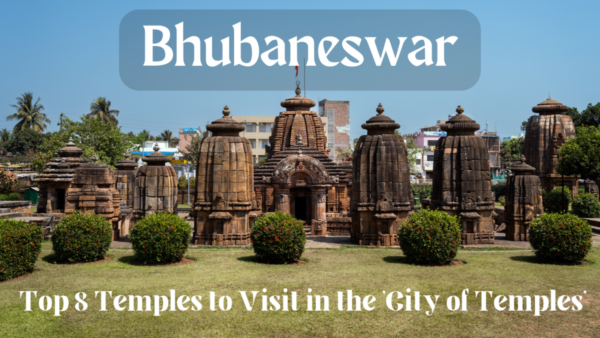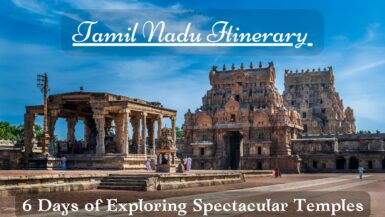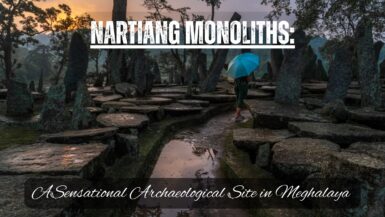Bhubaneswar, the capital city of Odisha, is a melting pot of Hindu, Buddhist, and Jain heritage with its history dating back to the 3rd century BC. According to legends, after killing the demon Gayasura, Lord Vishnu had placed his ‘chakra’ or disc at Bhubaneswar. Hence, Bhubaneswar is known as ‘Chakrakshetra’. It is also known as ‘Ekamra Kshetra’ or an area adorned with a mango tree, as its presiding deity Lingaraj was originally worshipped under a mango tree. Moreover, Bhubaneswar is fittingly called the ‘city of temples’. Once, the city used to be dotted with around 700 temples. Even now, the modern smart city is dappled with no less than 100 temples. You will encounter at least one temple or ruin of one at every juncture of this beautiful city. These temples are some of the finest specimens of the Kalinga School of temple architecture.
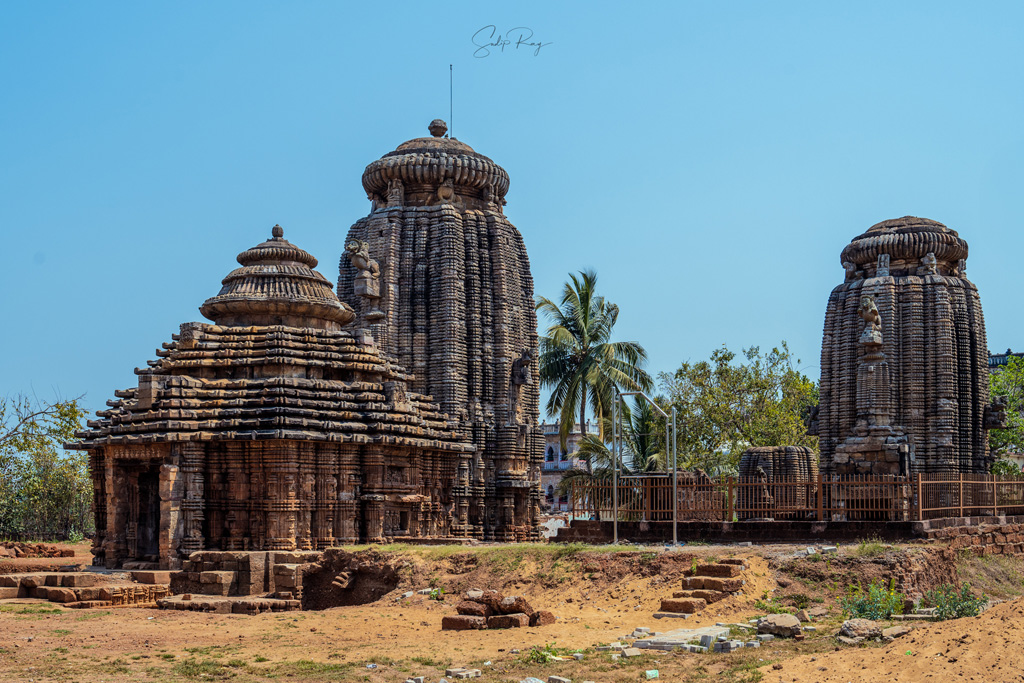
On our first visit to Bhubaneswar, we were overwhelmed by the sheer number of temples in Bhubaneswar. Also, we failed to explore most of the temples owing to inadequate planning. So, during our second stint at Bhubaneswar, we thoroughly researched beforehand and planned accordingly so as to cover the most important temples. So to ease your hitch, we have summed up the 8 must-visit temples in Bhubaneswar.
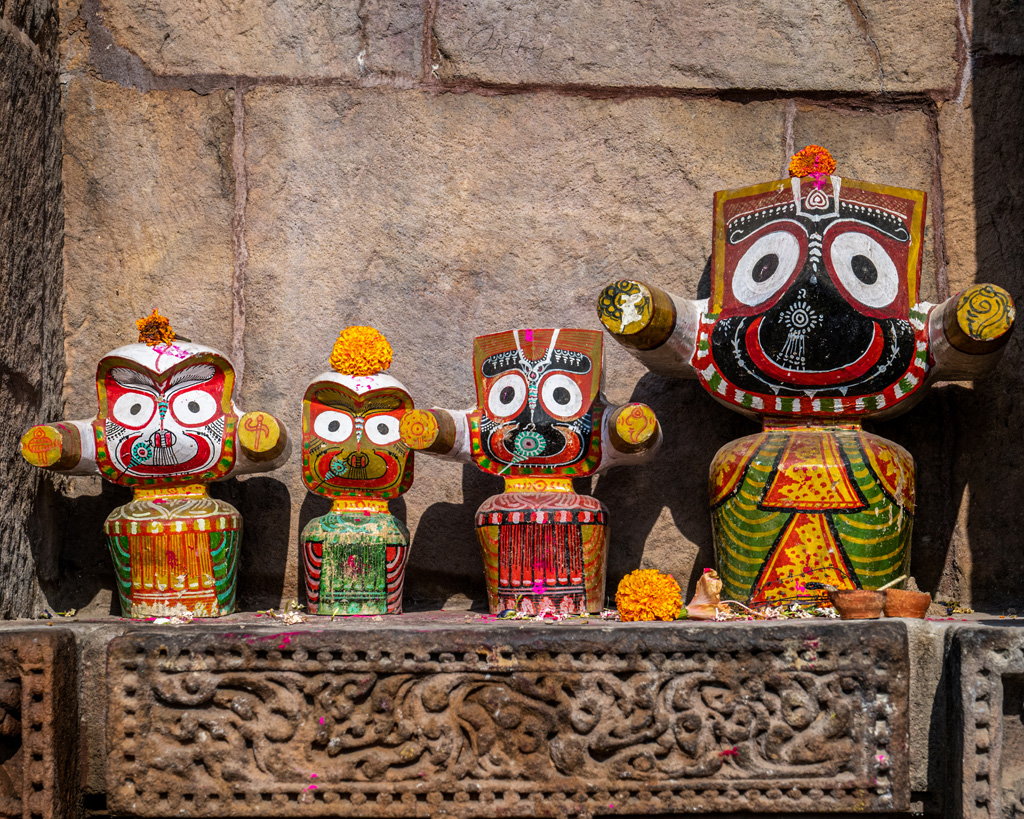
Table of Contents
Top temples to visit in Bhubaneswar:
1. Lingaraj Temple:
Dedicated to Lord Shiva, Lingaraj Temple is the largest temple of Bhubaneshwar. It is also one of the oldest temples of Odisha’s capital city.
This celebrated temple was built by Somavanshi ruler Yayati I in the 11th century CE. Historians regard the Lingaraj Temple as an epitome of the Kalinga style of temple architecture. It is also considered one of the finest examples of Indian temple architecture thanks to its vivid proportions, elegant craftsmanship, and imposing dimensions.
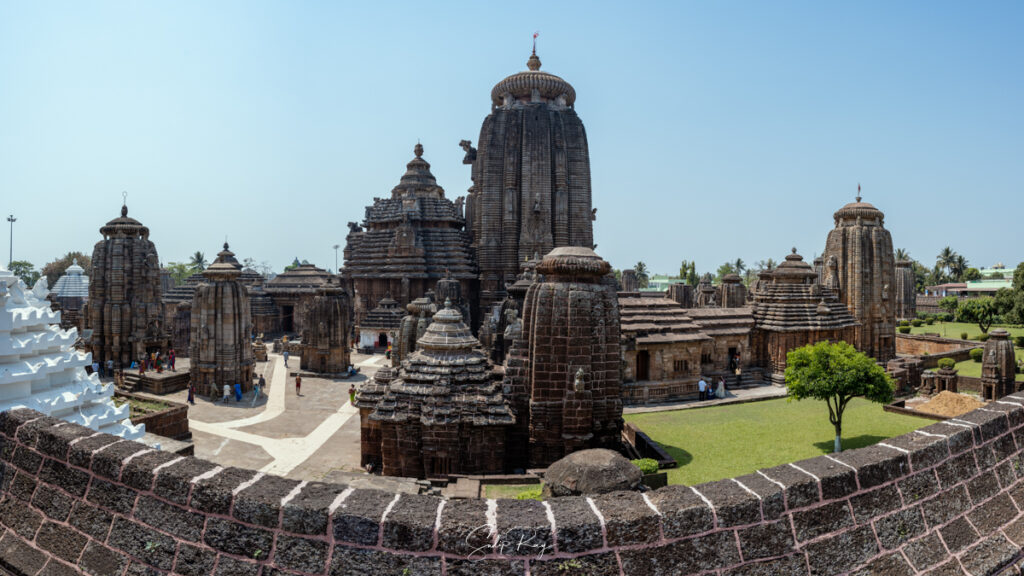
Shiva is worshipped at this temple as Tribhubaneswar or the master of three worlds. Here, Shiva is “Swayambhu” or self-manifested. Interestingly, the “lingam” here is worshipped as Harihara, a combined form of Vishnu and Shiva. This signifies a syncretic synthesis of Shaivism and Vaishnavism.
Towering at a majestic 200 ft. height, this spectacular temple will leave you awestruck. The walls of the Lingaraj Temple are decorated with exquisite sculptures. Furthermore, the huge courtyard is dotted with 50 smaller shrines, including one dedicated to Parvati.
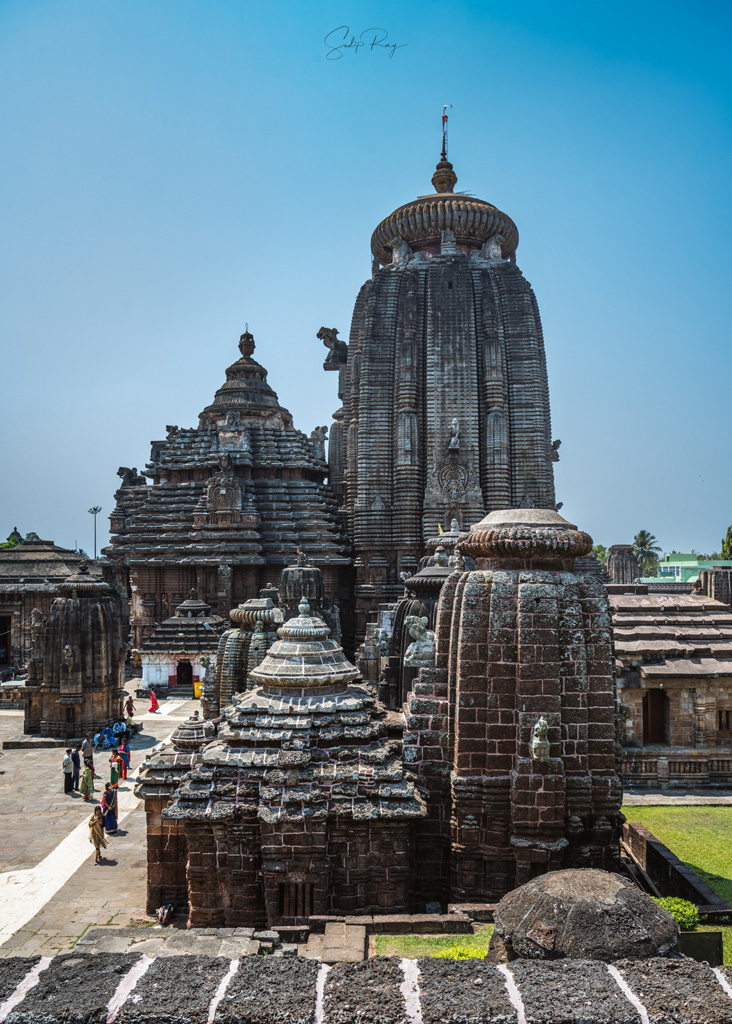
Please note that only Hindus are allowed entry inside the temple complex. Also, photography is prohibited here. However, there is a viewing platform, which was originally built for Lord Curzon. You can take photos or videos from this platform.
2. Mukteswar Temple:
Dedicated to Shiva, Mukteswar is a unique temple in terms of its ground-breaking architecture. It dates back to the 10th century CE.
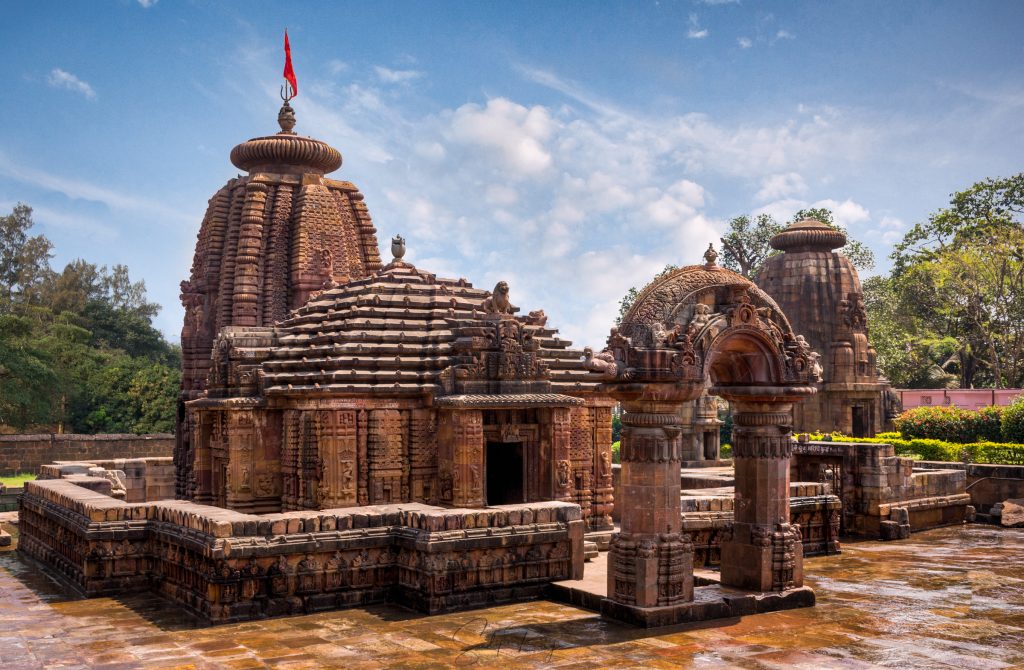
This is one of the few active temples in Bhubaneswar. Here, Shiva is worshipped as Mukteswar, or the Lord of Freedom (from the endless cycle of life and death). The temple is situated in a garden complex known as Siddharanya or ‘Forest of Siddha’.
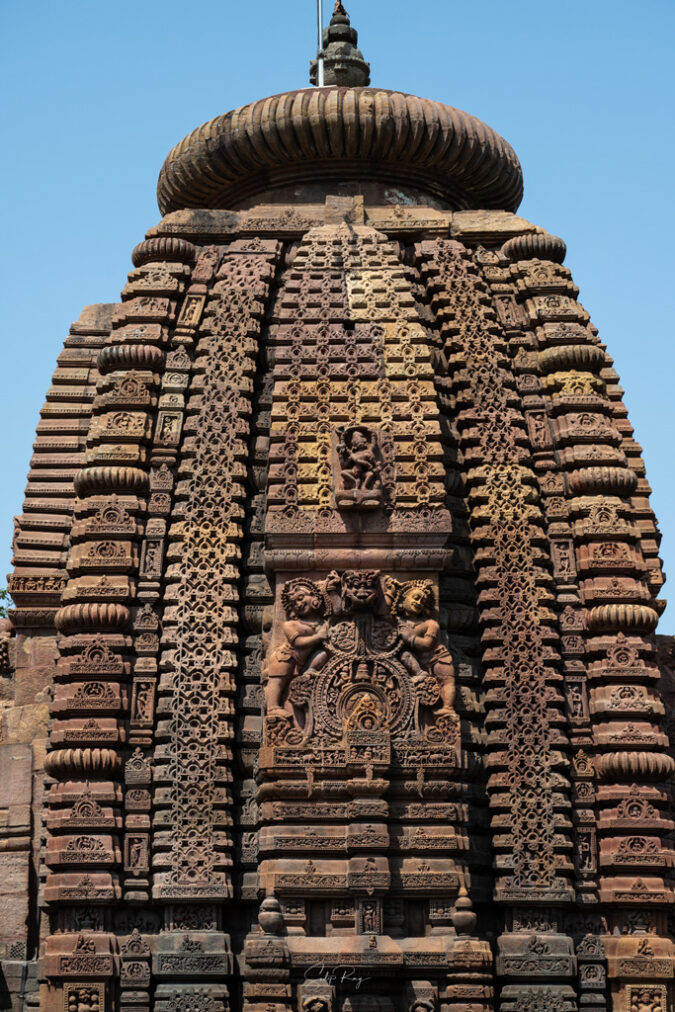
This temple represents the culmination of innumerable experiments conducted by the Kalinga artisans. It is distinguished for its “torana” at its entrance and sculpted ceiling inside the “jagamohana” or sanctum.
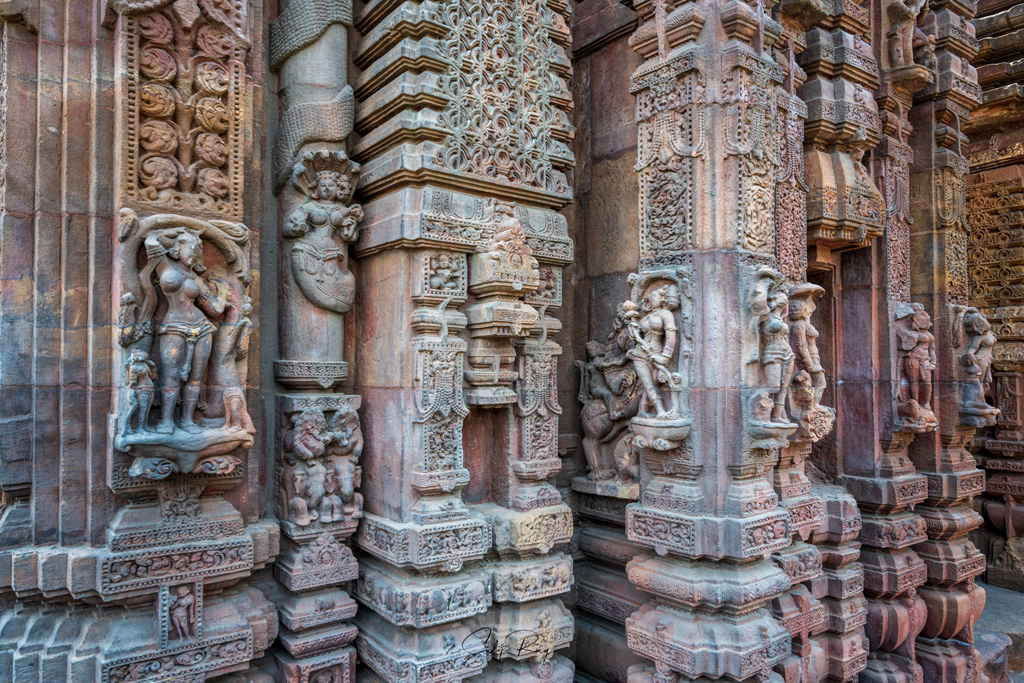
The most distinctive feature of this temple is the “torana” or arched gateway, signifying Buddhist influence on its building style. It is built of red sandstone and covered in delicate carvings of ‘apsaras’, Nataraja, Gajalakshmi, Kirtimukhas, etc. No wonder, Mukteswar Temple is deemed as “gem of Kalinga architecture”.
3. Rajarani Temple:
This is one of the most beautiful temples of Bhubaneswar. The temple’s name is derived from the dull red and yellow sandstone, locally called ‘rajarani’, which was used in its construction.

The Rajarani Temple dates back to the mid-11th century CE. Historians believe that it was originally called Indreshwar Temple. Though no deity lies inside the sanctum, general consensus opine that Shiva was worshipped here.
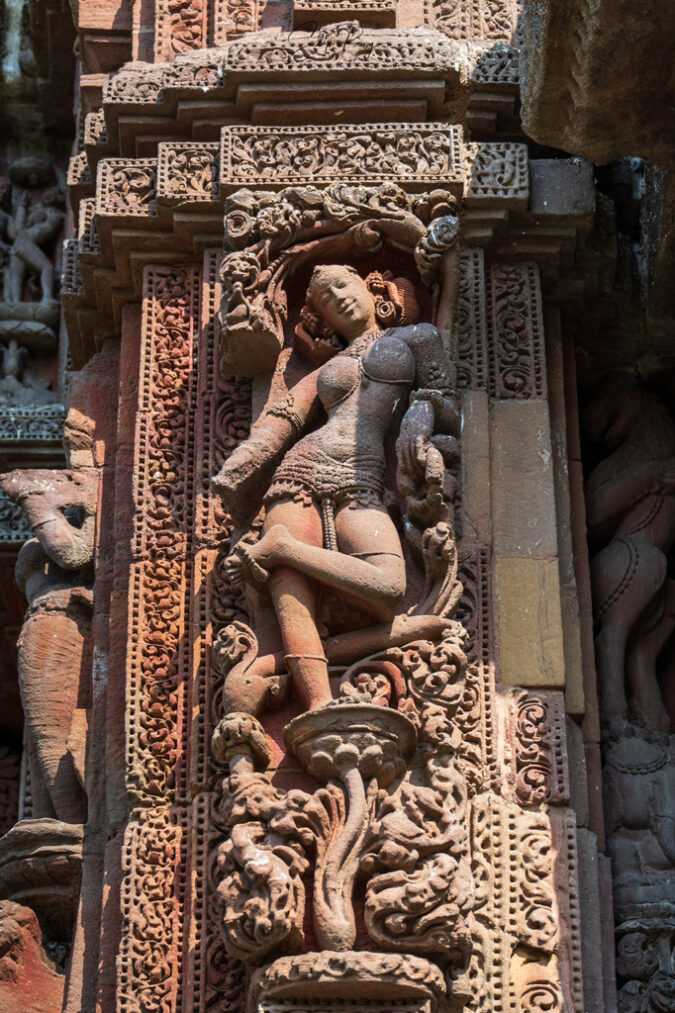
This well-crafted temple is built in the ‘pancharatha’ style on a raised platform. In fact, the architecture of Rajarani Temple served as an inspiration for the construction of other temples in central India, particularly the temple clusters of Khajuraho.
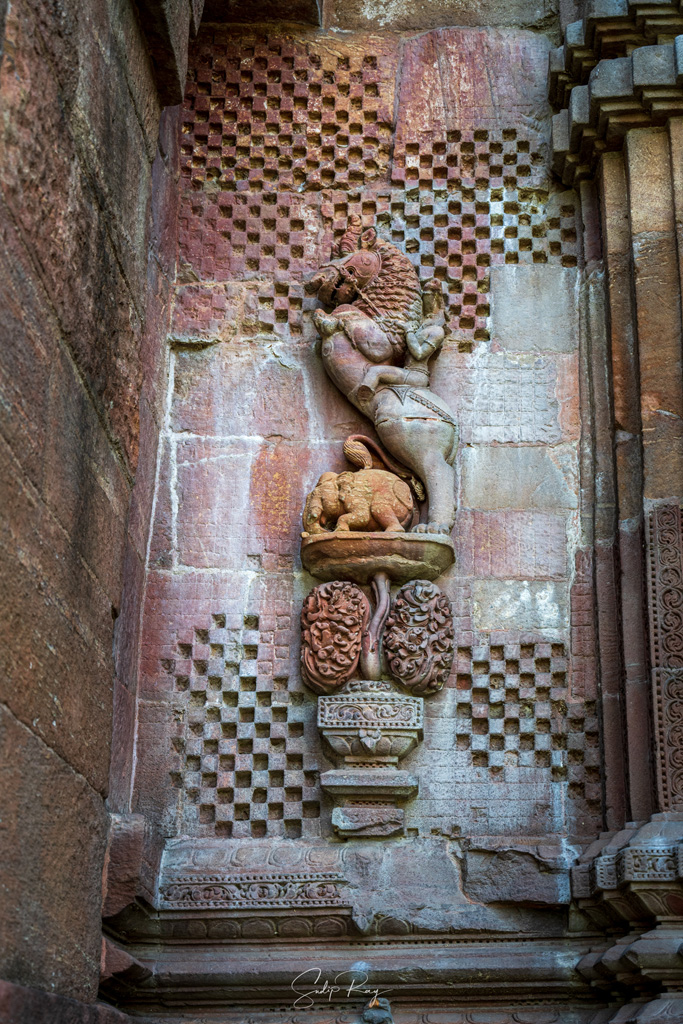
The exterior of the temple is endowed with graceful sculptures such as a maiden looking at the mirror, ‘apsara’ playing musical instruments, and so on.
4. Parshurameswar Temple:
The Parshhurameswar Temple is regarded as the oldest temple in Bhubaneswar. It dates back to the 6th century CE and is believed to be the best-kept specimen of the early Odia Hindu temple.
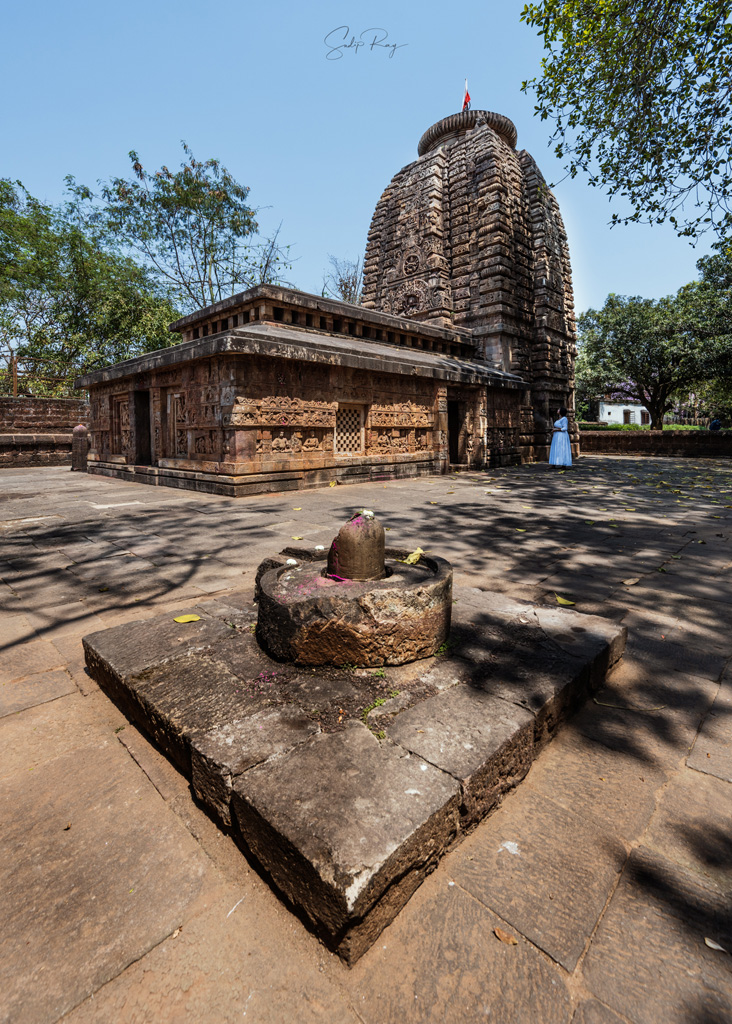
This temple was built by the rulers of the Shailodbhava dynasty. It is dedicated to Shiva, who is worshipped here as the Lord of Parshurama, one of the 10 avatars of Vishnu. Interestingly, the Shiva linga is placed facing the western direction. This is contrary to the prevalent Hindu custom of placing the deity facing the east.
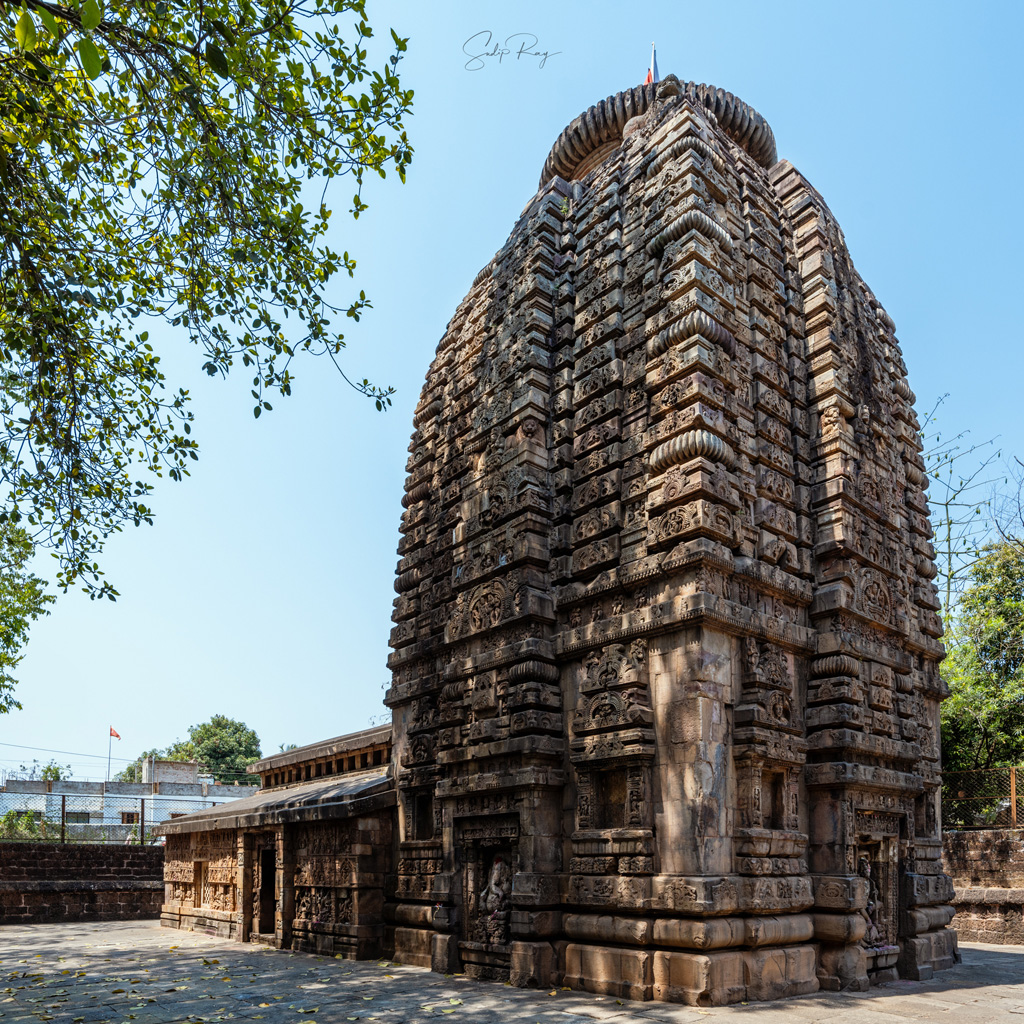
The Parshurameswar Temple is one of the earliest examples of the Nagara style of architecture. It later influenced the architecture of Mukteswar Temple, Rajarani Temple, and Konark’s Sun Temple.
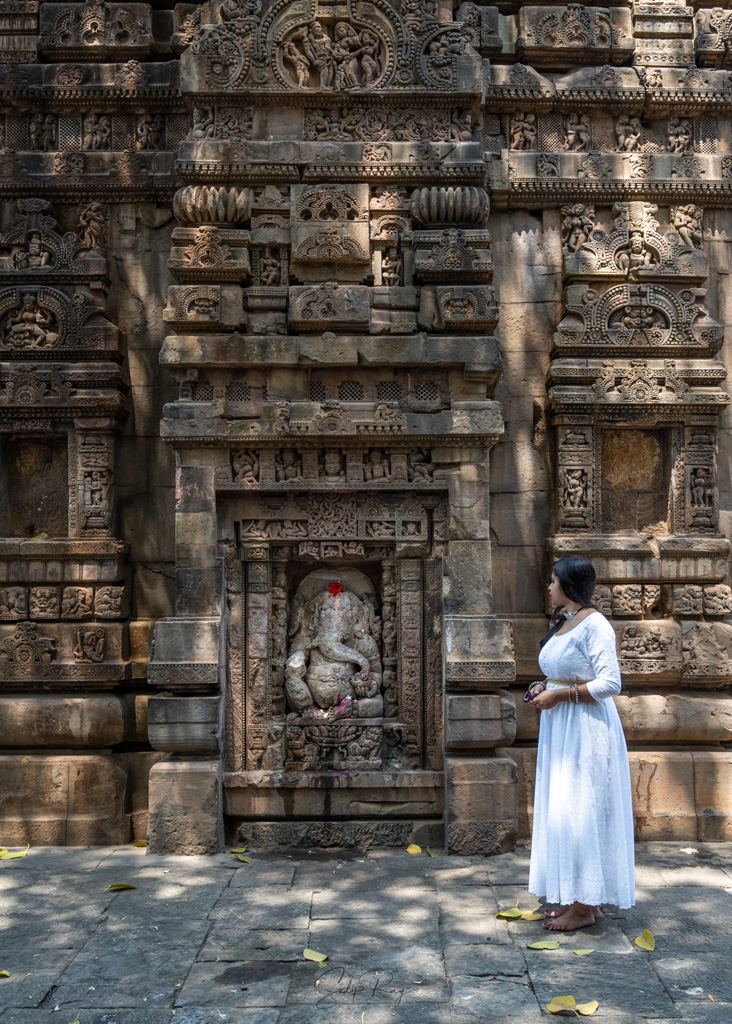
This temple has some fascinating sculptures, foremost among which is the depiction of “Saptamatrika” or seven goddesses. Other wall panels include the marriage of Shiva and Parvati, six-armed Nataraja, Veerbhadra, Ganesha, Kartikeya riding his peacock, Ardhanarishwara, and so on.
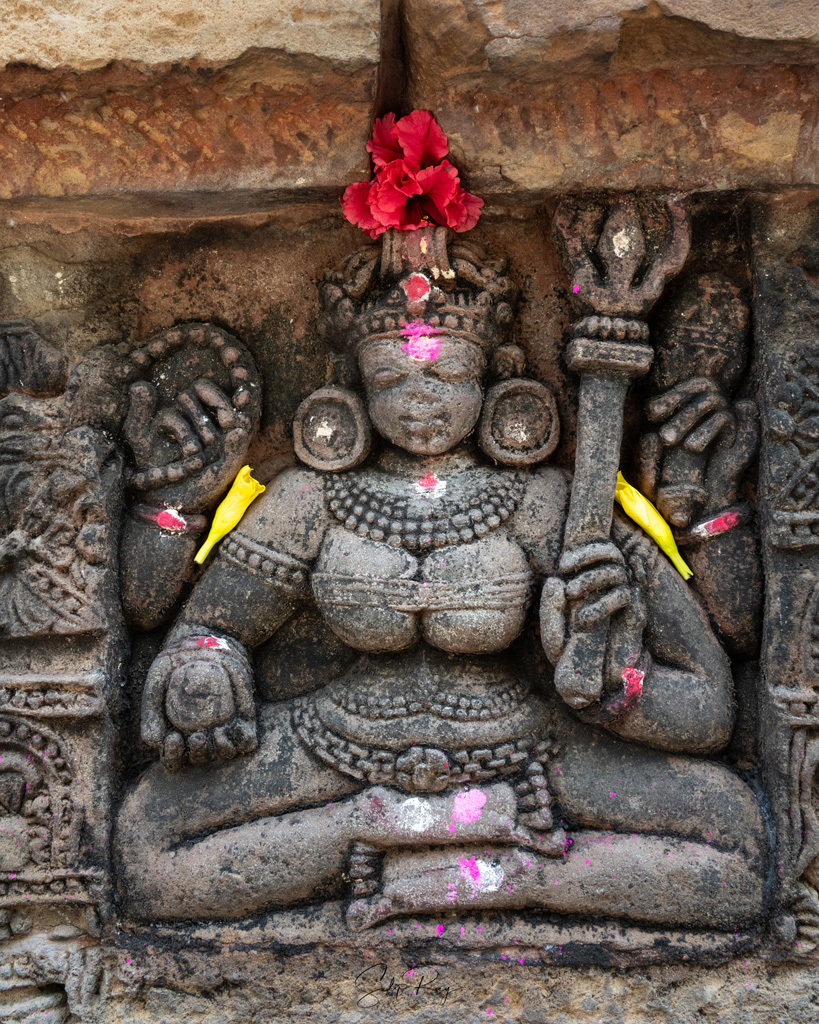
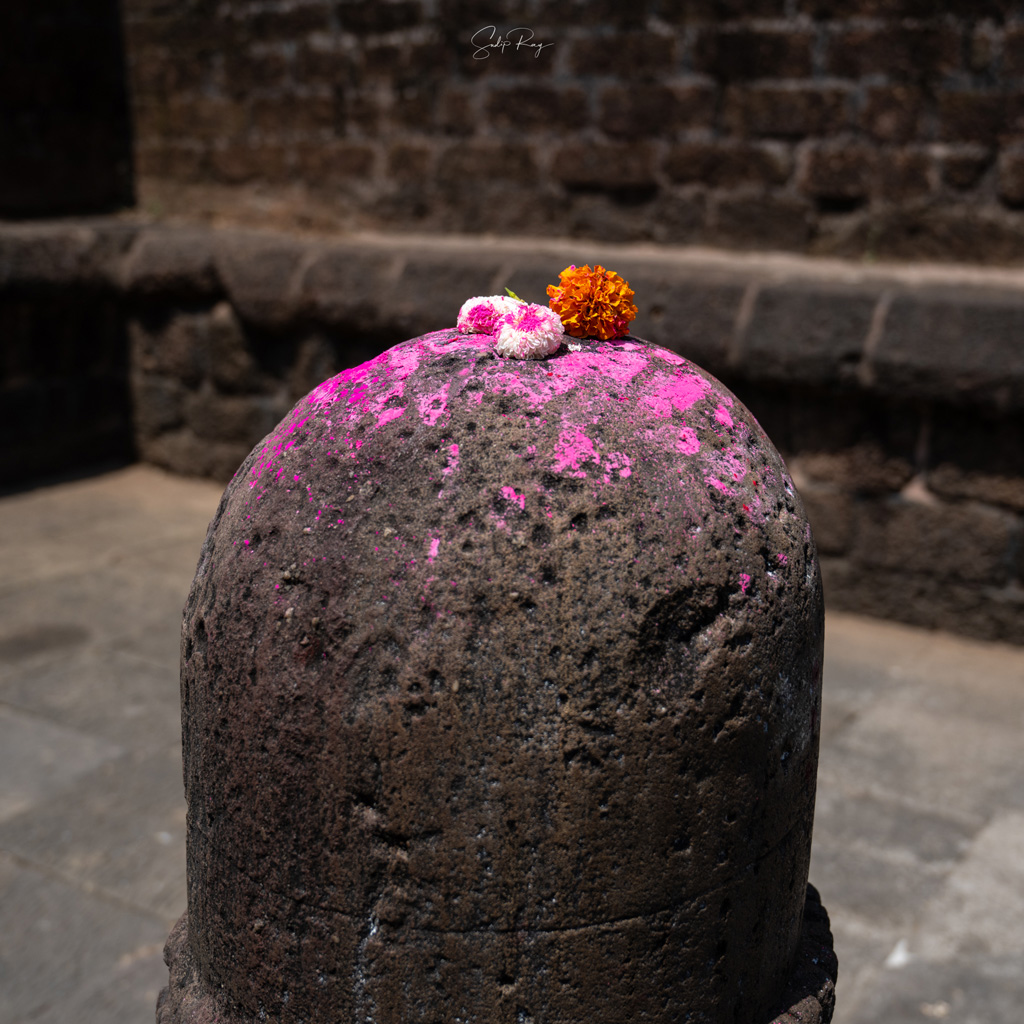
5. Baitala Deula:
Baitala Deula is an outstanding illustration of ‘Khakhara’ style of Kalinga architecture. Goddess Chamunda is worshipped here.
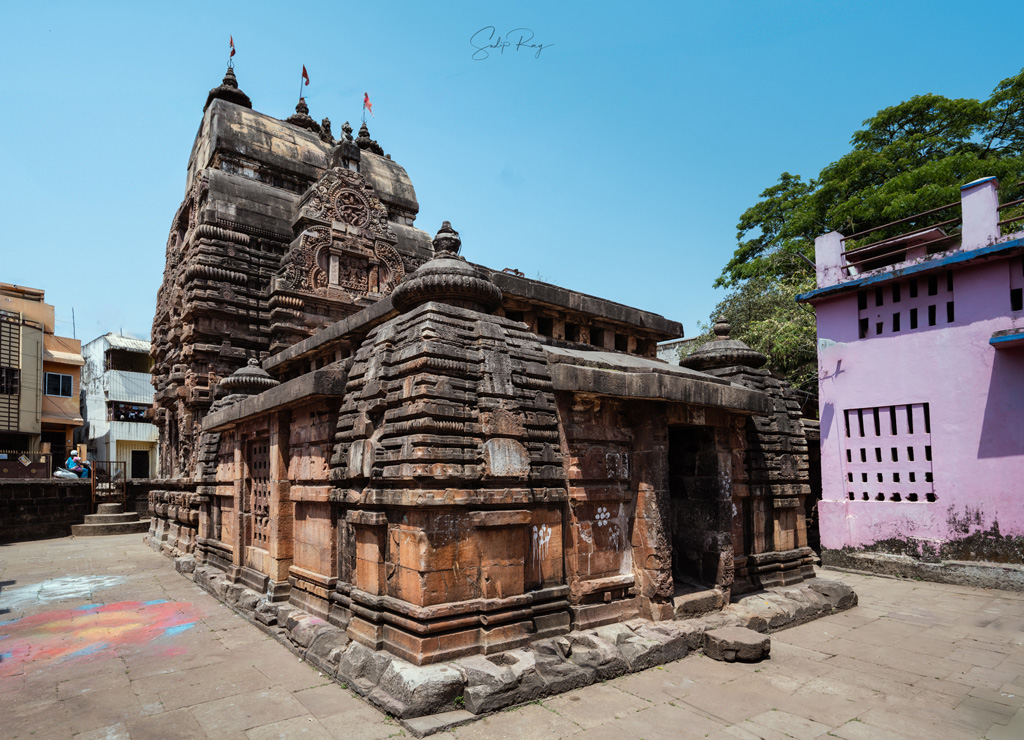
The distinctive feature of Baitala Deula is its semi-cylindrical shaped roof, bearing part resemblance to the ‘Gopuram’ of South Indian temples.
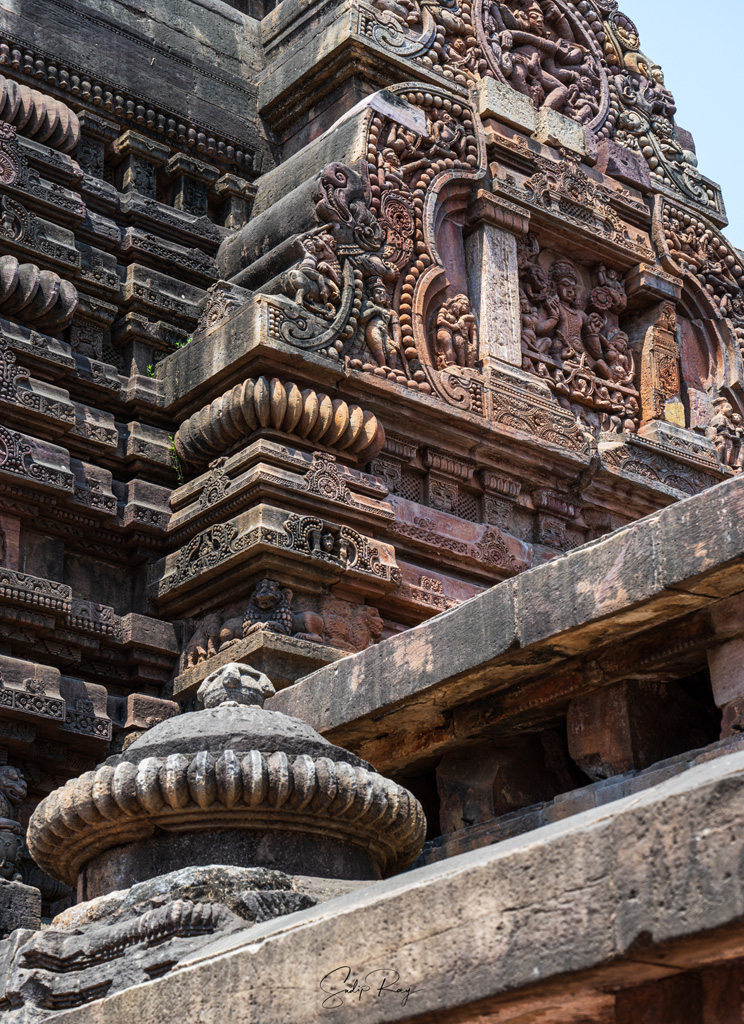
It is also characterized by the presence of three spires atop the roof. This is an unusual feature, hardly found elsewhere. The three spires are believed to manifest the three powers of Chamunda – Mahasaraswati, Mahalakshmi, and Mahakali.
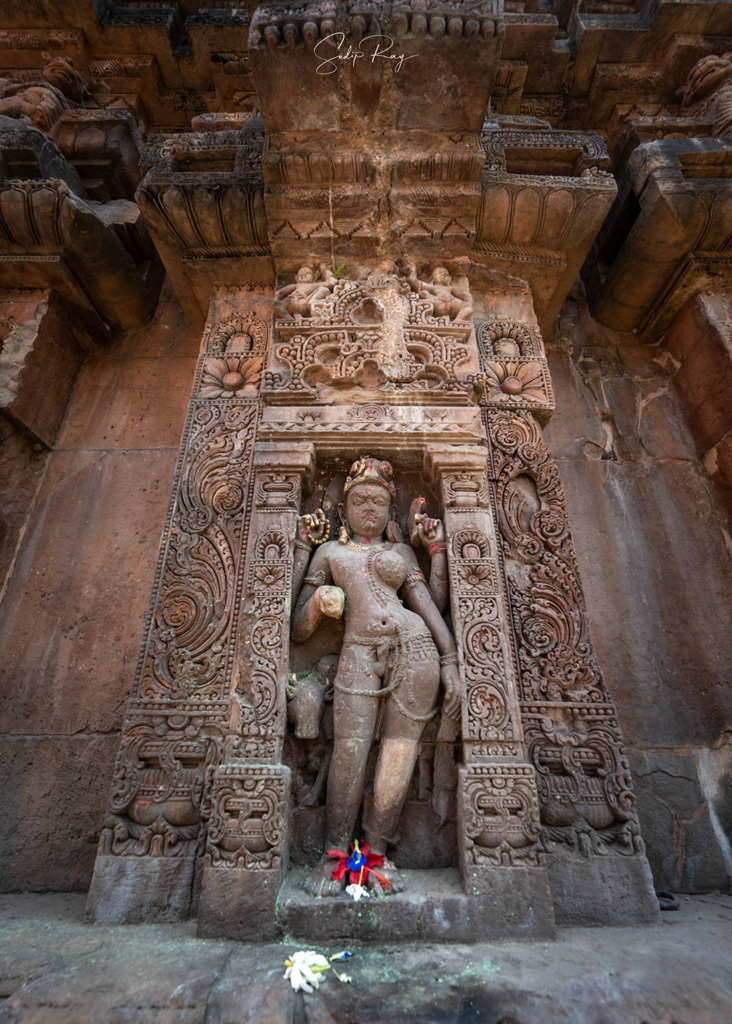
The outer walls of this temple have some beautiful carvings such as Durga slaying Mahishasura, Ganesha, Ardhanarishwara, ten-armed Nataraja, Sun God along with Usha and Pratyusha, and many other sculptures having Tantric themes.
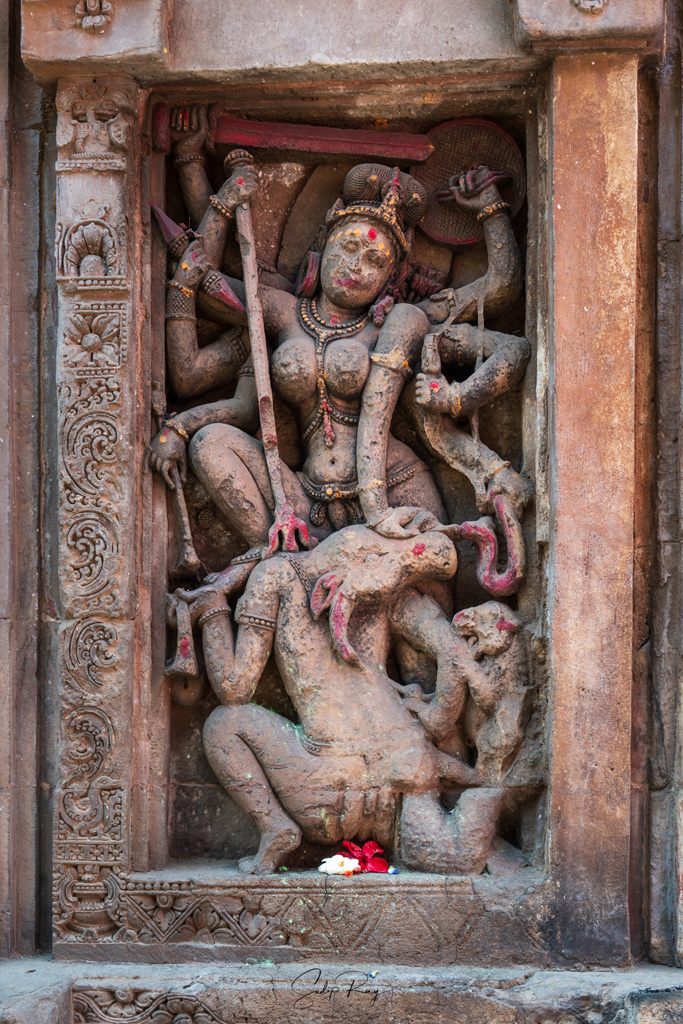
6. Ananta Vasudeva Temple:
This is one of the most venerated temples in Bhubaneswar. It was commissioned by Queen Chandrika of the Eastern Ganga dynasty in the 13th century.
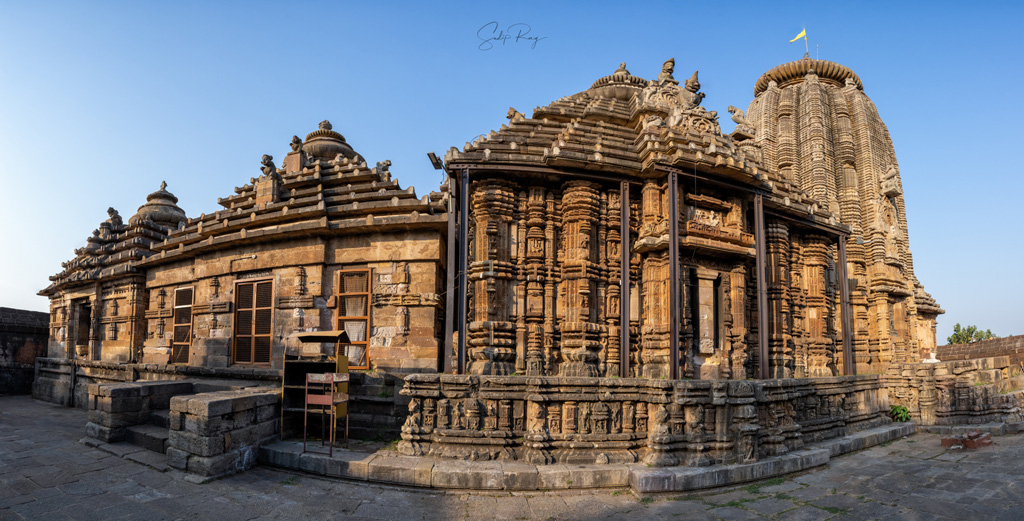
This captivating temple houses the complete ‘shrimurti’ or idols of Krishna, Balarama, and Subhadra. Unlike Puri’s Jagannatha Temple, here the idols are made of granite instead of wood. As such, Bhubaneswar acquired the title of ‘Chakra Kshetra’ or circular place, while Puri is known as ‘Shankha Kshetra’ or curved place.
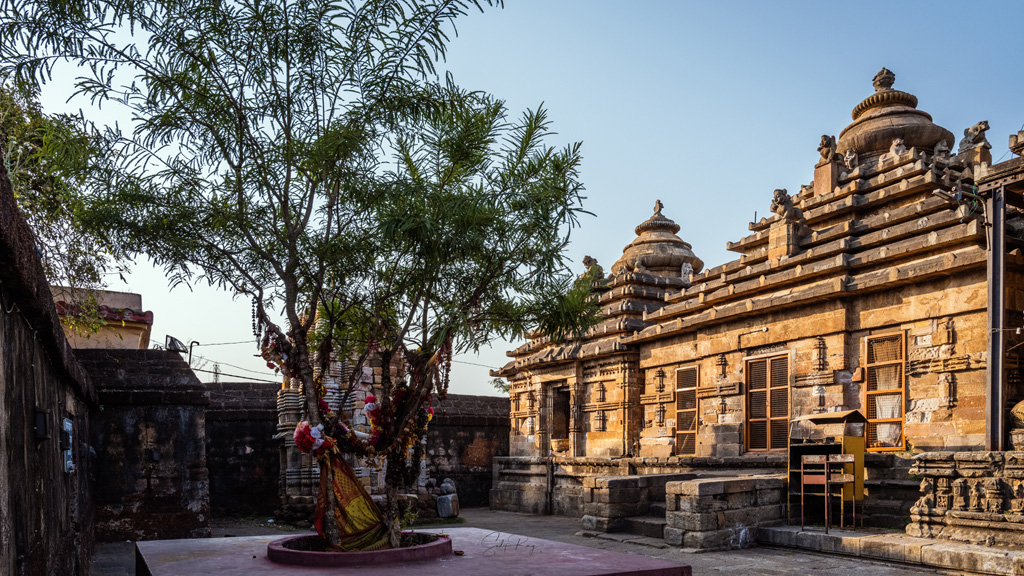
This temple is also famous for its ‘Prasada’ called ‘Abhada’.
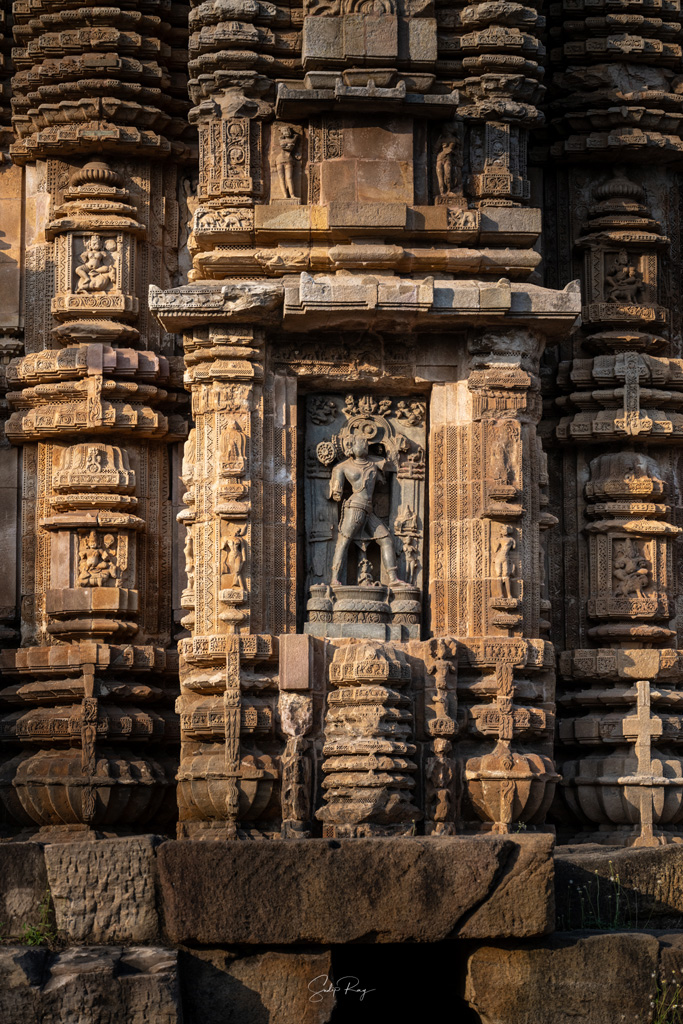
7. Brahmeshwar Temple:
The majestic Brahmeshwar Temple is a significant part of Bhubaneswar’s architectural heritage. It was built in the 9th century CE under the royal patronage of Queen Kolavati Devi of the Somavansi dynasty.
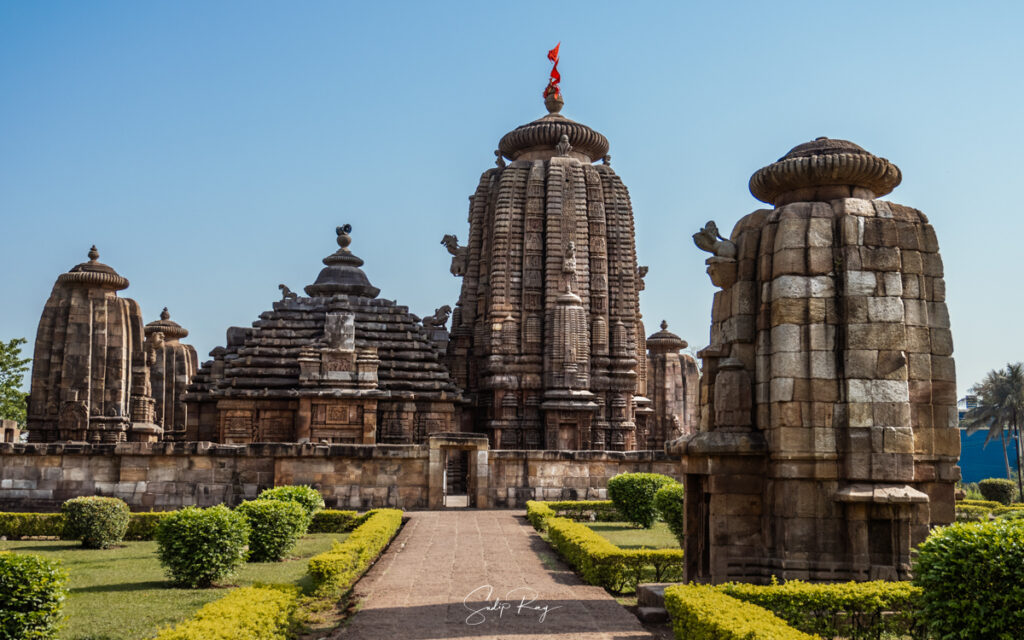
It is built in ‘panchatanaya’ style, where four subsidiary shrines are built in four corners along with the main shrine. Curiously, in this temple, iron beams were used for the first time in the history of Indian temple architecture.
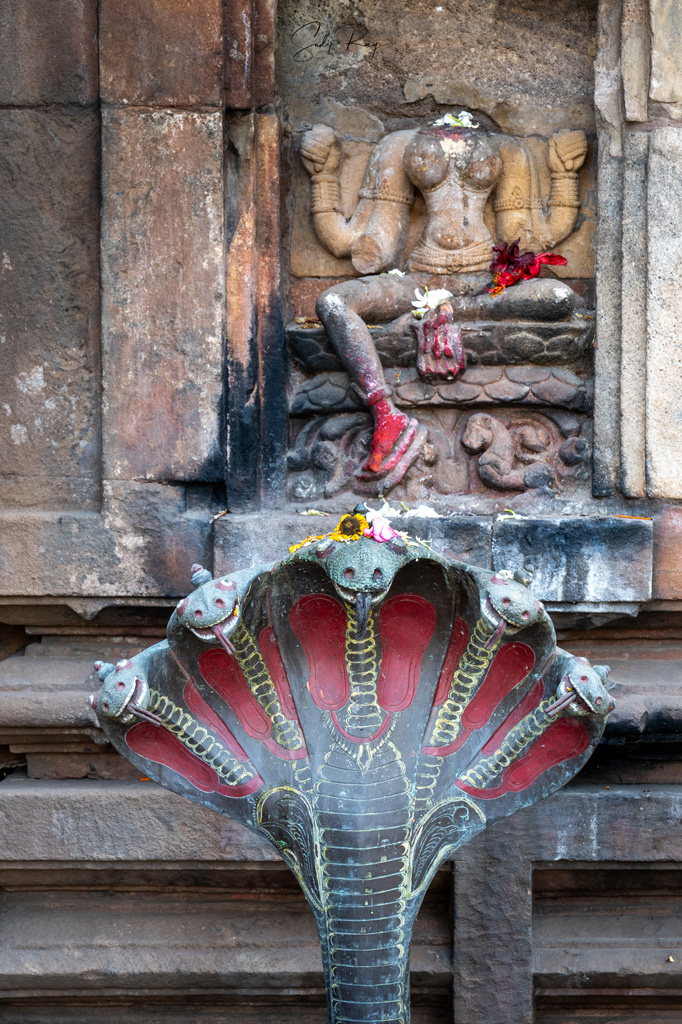
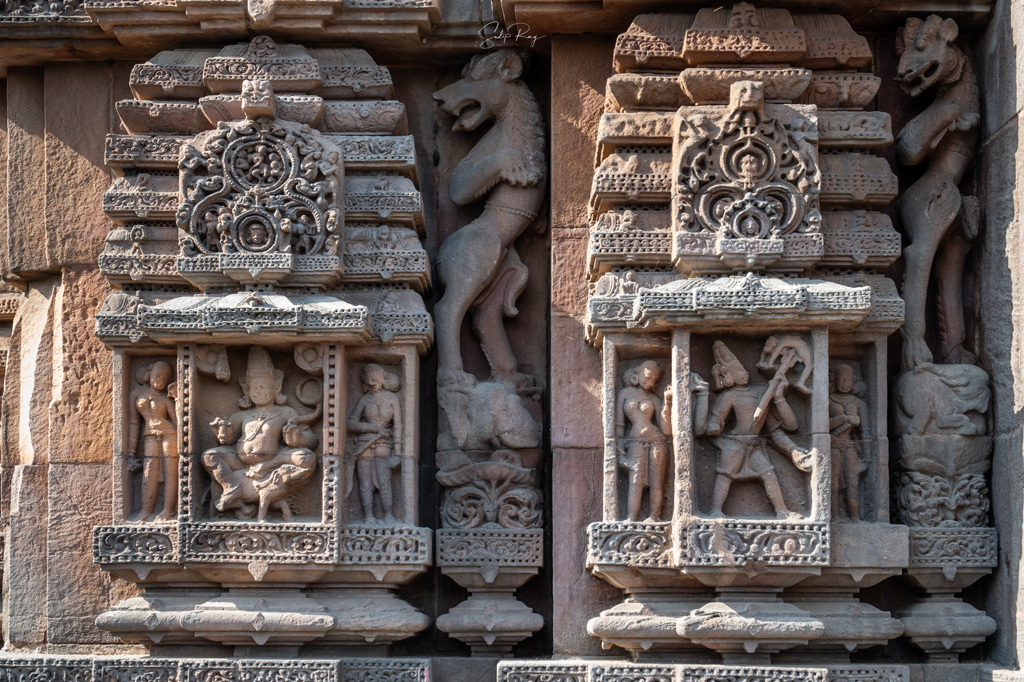
The exterior of the temple has fine sculptures such as Chamunda, Shiva, guardian deities, and a multitude of dancers and musicians.
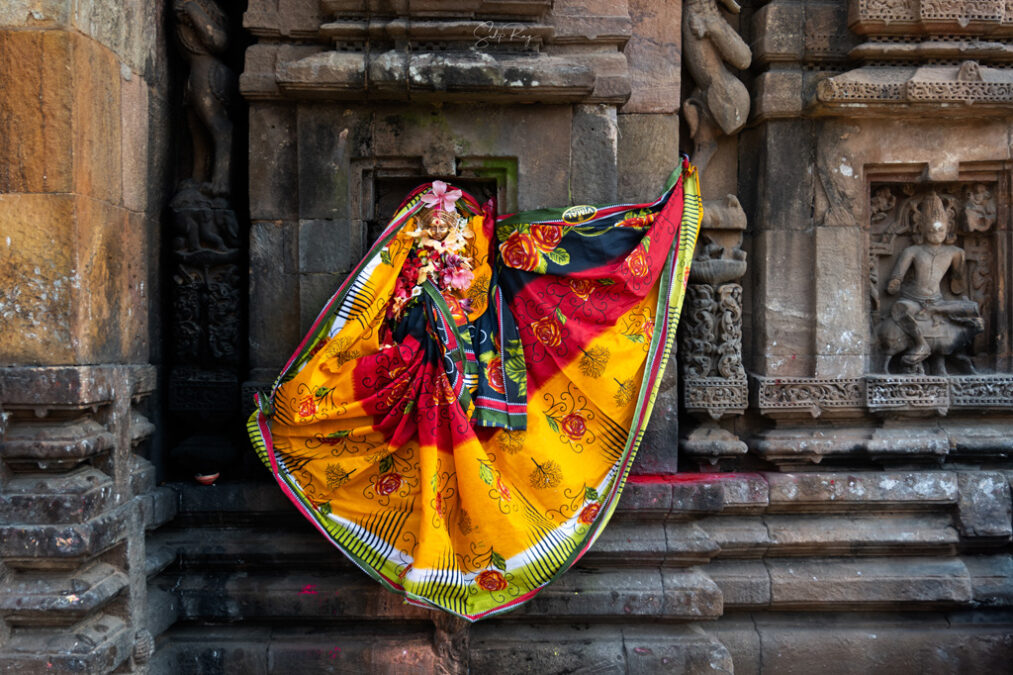
8. Chausath Yogini Temple:
This unique temple is situated in Hirapur, 15 km away from Bhubaneswar. It is devoted to the worship of Yoginis or demi-goddesses, who were parts of Goddess Durga and helped her in slaying ‘asuras’. This tantric shrine was built under the aegis of Queen Hiradevi of the Brahma dynasty in the 9th century CE.
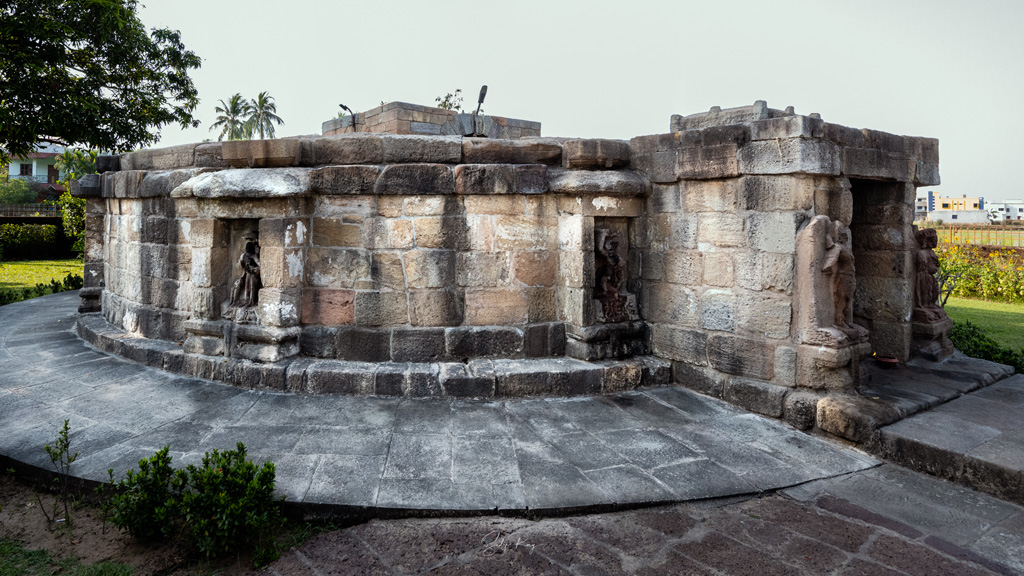
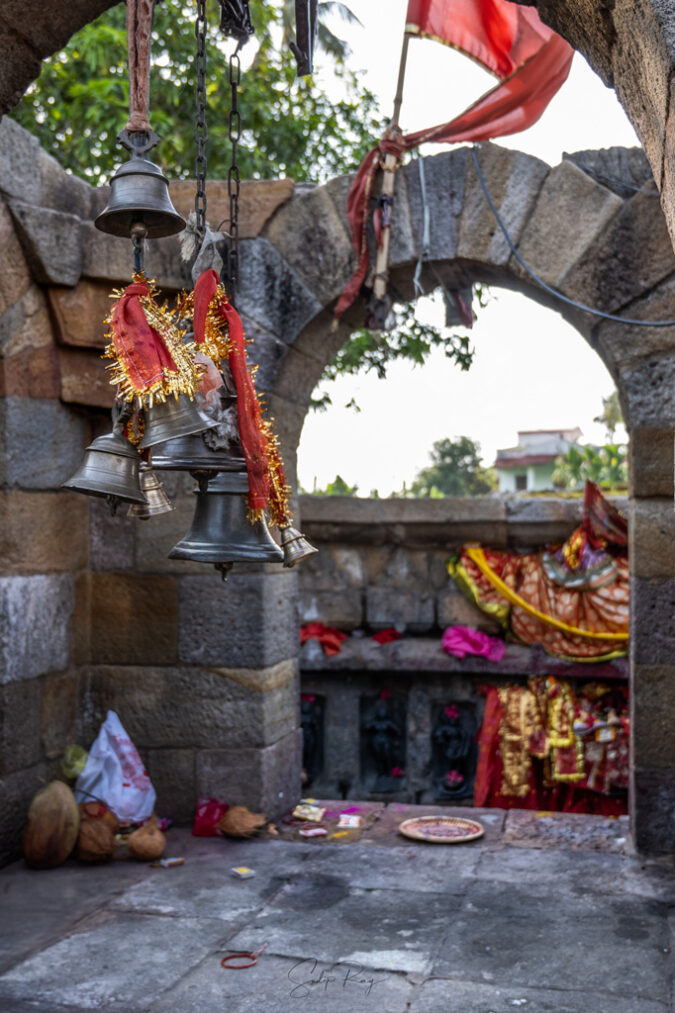
The striking feature of this temple is its roofless, circular architecture. The temple was built in such a manner as tantric rituals involve worshipping the environment along with its five principal elements and also due to the belief that the yoginis could fly.
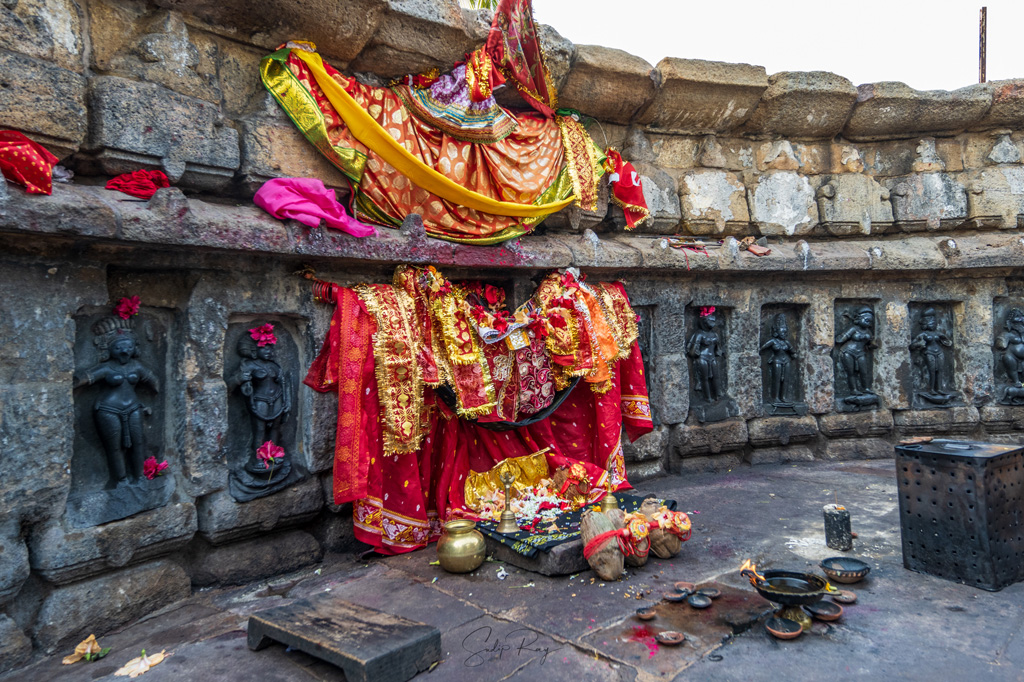
Inside the circular wall, there are niches that frame the stone idols of 64 Yoginis. They encircle Goddess Kali, the main idol of this temple.
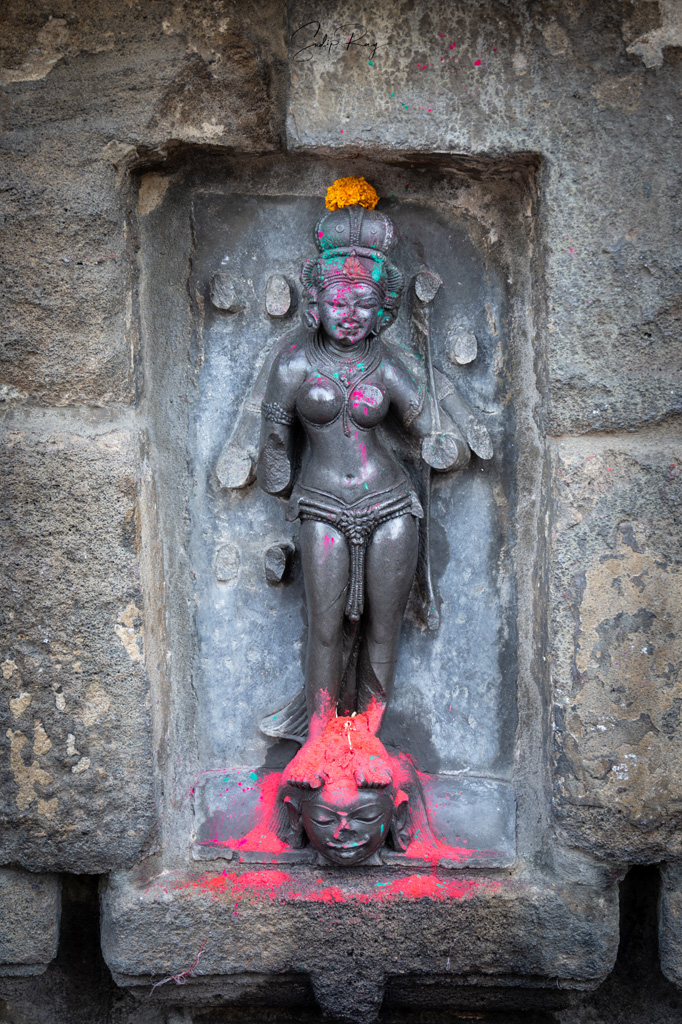
Important FAQs:
1. How can I reach Bhubaneswar:
Bhubaneswar is the capital of Odisha. As such, it is very well-connected with the rest of the country.
By air: Biju Patnaik International Airport of Bhubaneswar is linked with major Indian cities. Flights operate daily from Kolkata, New Delhi, Chennai, and Mumbai.
By train: Train connectivity is also superb in Bhubaneswar. From Kolkata, you can opt for 22895 Vande Bharat Express, 12277 Shatabdi Express, 12073 Janshatabdi Express, 12837 Howrah Puri Superfast Express, 22201 Duronto Express, 12821 Dhauli Express, and 18409 Jagannath Express.
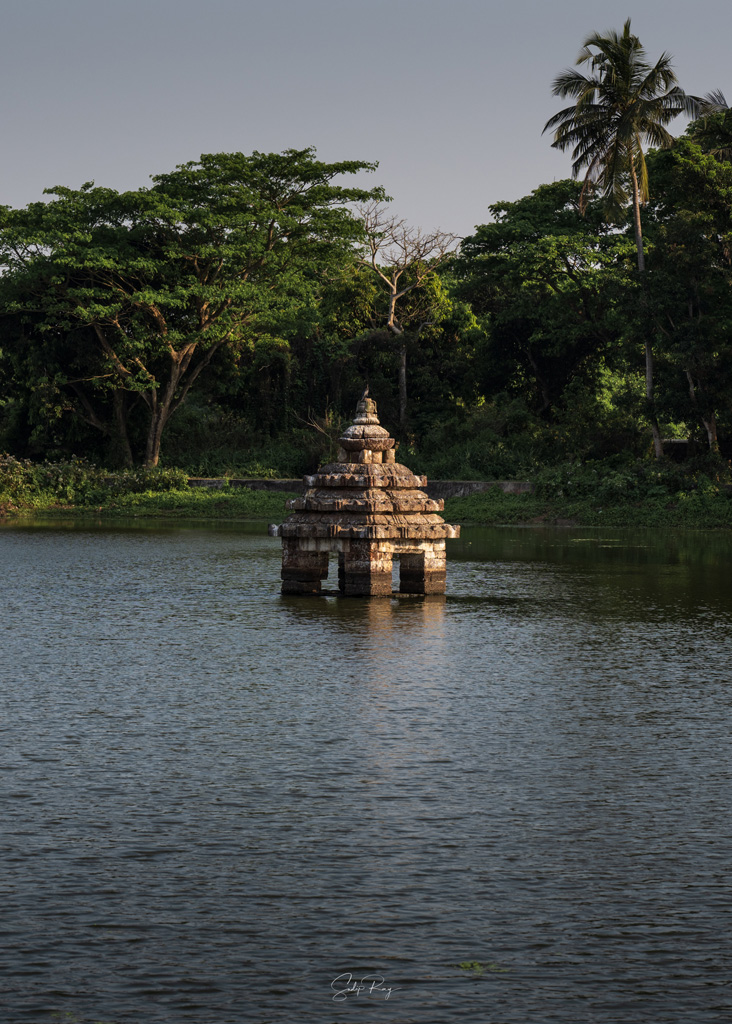
2. Where can I stay in Bhubaneswar:
Bhubaneswar offers various options of accommodation suited to every pocket. You can stay in:
OTDC Panthanivas Bhubaneswar: Three types of rooms are available at INR 1,600, INR 2,100, and INR 3,000.
Hotel Pushpak: This is our go-to hotel whenever we visit Bhubaneswar. Different types of rooms are available at INR 3,200, INR 3,800, INR 4,800, INR 5,200, and INR 7,000.
Hotel Excellency: Rooms are available at INR 2,736 and INR 3,783.
Mango Hotels Prangan: Cozy rooms are INR 2,300, INR 3,300, and INR 4,200.
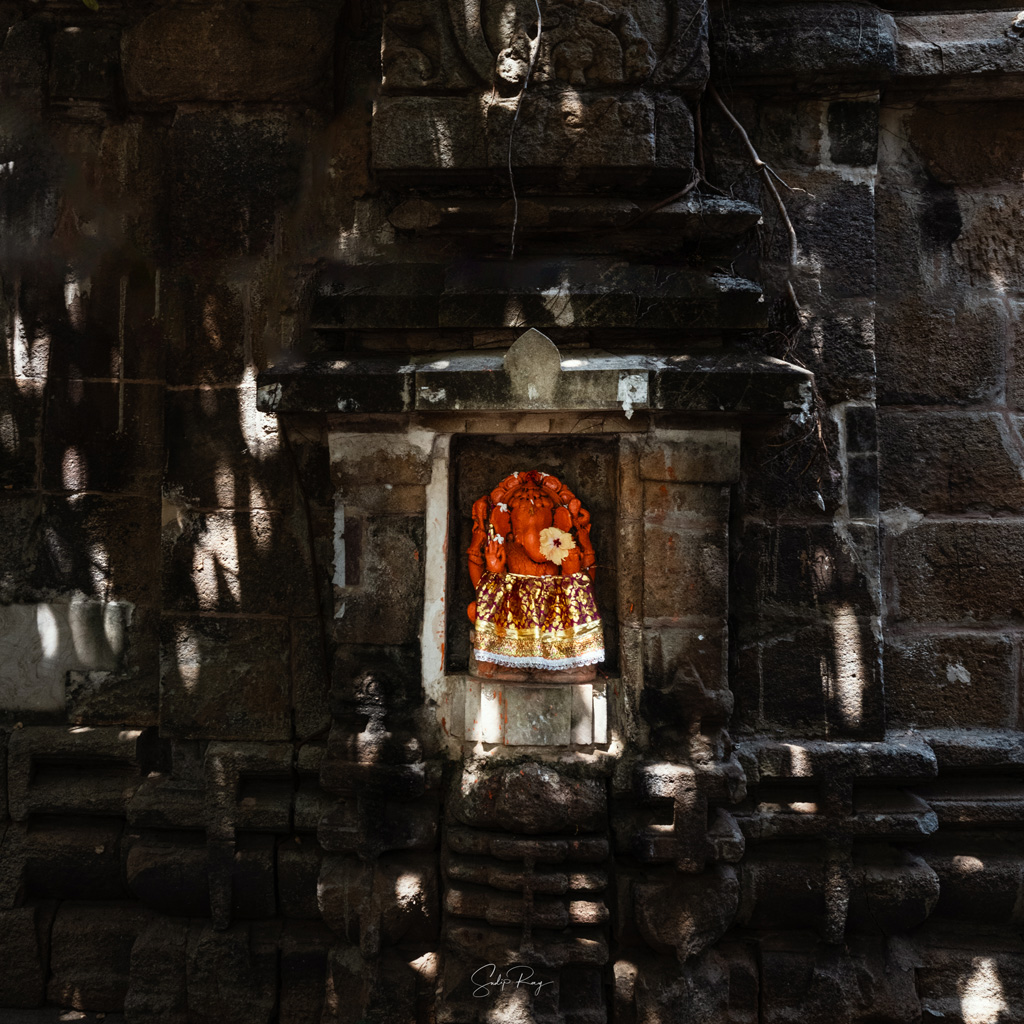
3. What is the best time to visit Bhubaneswar:
The winter months (November to February) are perfect for exploring Bhubaneswar. Avoid the summer months, as the weather remains scorching and humid. It is absolutely uncomfortable to travel during this time.
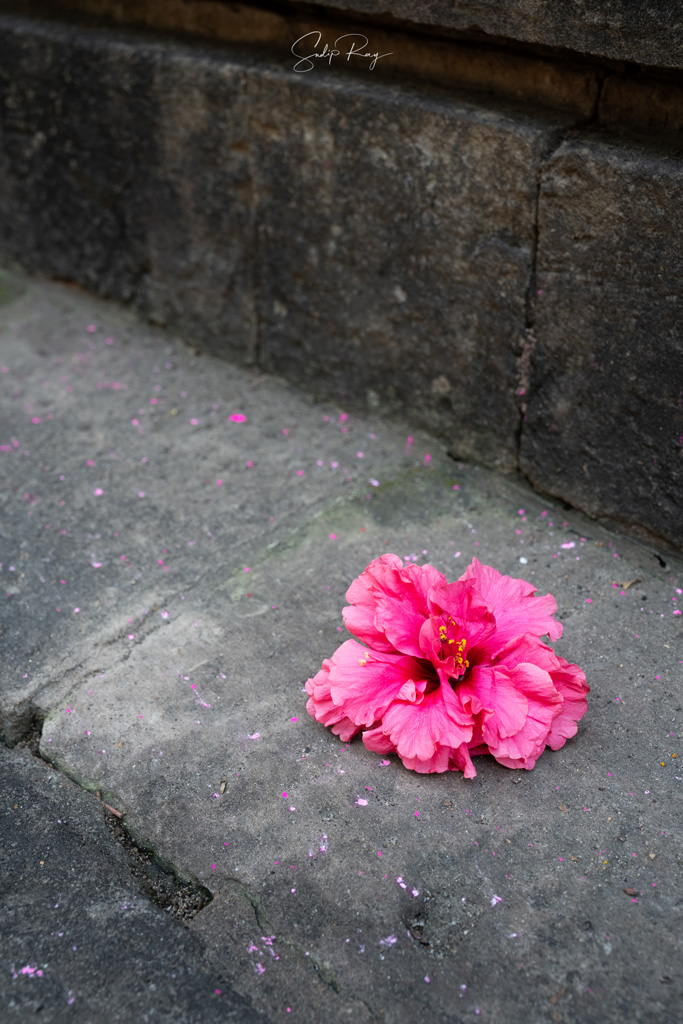
4. What are the opening and closing times of the temples:
The temples generally remain open from 6 AM to 6 PM.
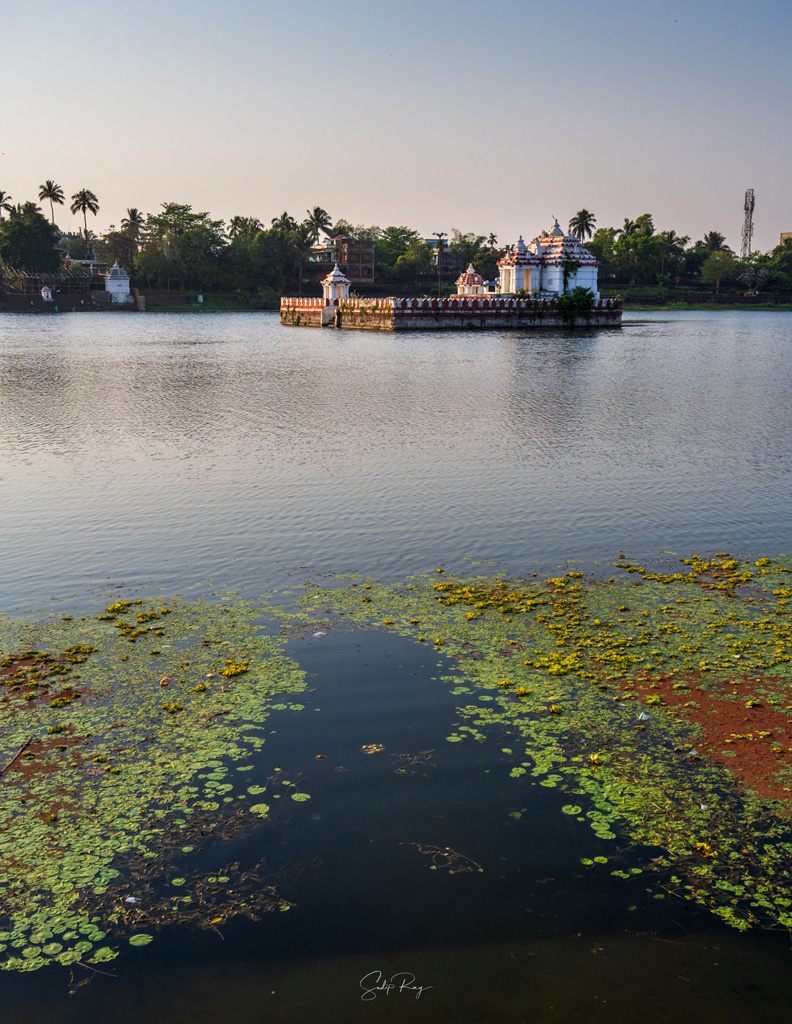
5. What are the general guidelines for visiting these temples:
Since most of the temples in Bhubaneswar are active ones, try following some general guidelines while visiting them:
Wear modest clothes, which cover your shoulders, hands, and legs.
Leave your shoes outside before entering the active temples.
Photography is not allowed inside the premises of Lingaraj Temple. However, there is a viewing platform outside the temple from where you can take photographs.
Visit the Lingaraj Temple as early as possible as it starts getting crowded with the passing of time.
Non-Hindus are not allowed inside active temples, especially Lingaraj Temple.
Show respect for the local customs and culture.
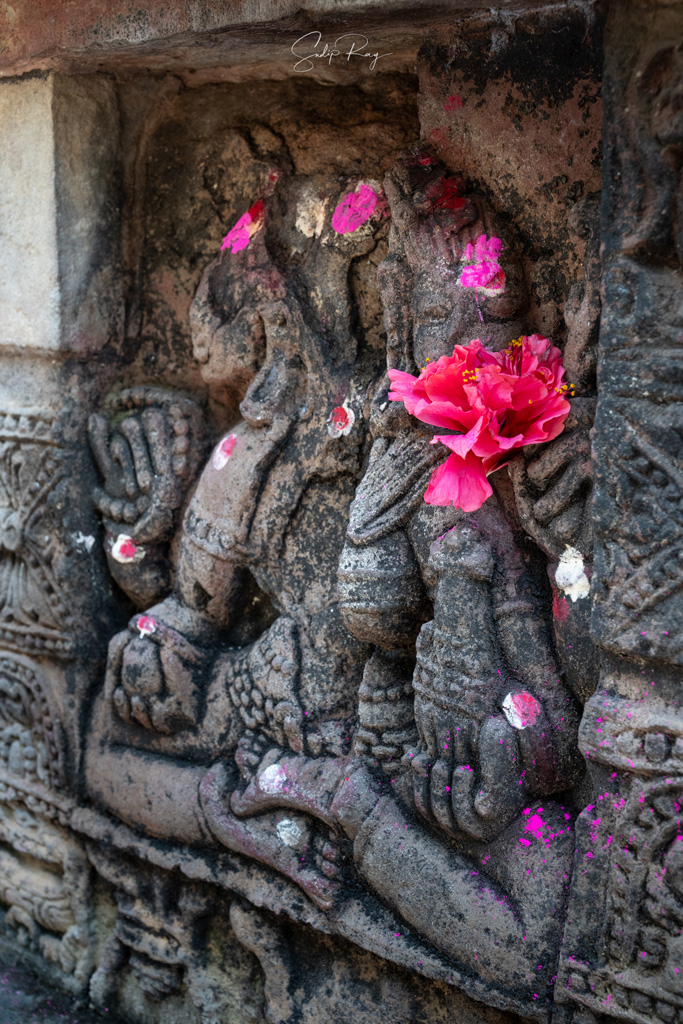
6. What are the other places to visit in and around Bhubaneswar:
Apart from the magnificent temples, Bhubaneswar has a host of other fascinating attractions:
A. Udaygiri & Khandagiri Caves:
These partly natural, partly manmade caves served as the residence of Jain monks during the reign of Kharvela. While Udaygiri has 18 caves, Khandagiri has 15 caves.
The most famous among the Udaygiri caves is the Rani Gumpha, a double-storied cave beautified by ornate sculptures. Other significant caves here are the Ganesha Gumpha with 2 elephant statues at the entrance, Vyaghra Gumpha whose entrance resembles a tiger’s head, and Hati Gumpha, which houses the famous rock inscription of Kharvela, depicting the details of his reign.

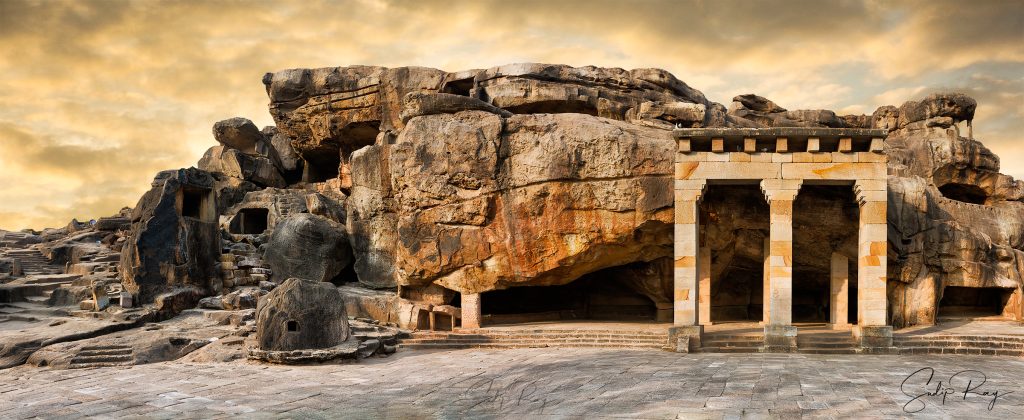
At the steeper Khandagiri, important caves are the Barabhuji Gumpha which houses a 12-armed Chakreshwari (thus giving the name ‘Barabhuji’ to the cave) and 25 figures of Jain Tirthankaras on the walls, Navamuni Gumpha bearing rough sculptures of 9 Jain Tirthanakaras, and Lalatendu Keshari Gumpha with beautiful carvings of Rishavanatha and Parshwanatha.
B. Dhauli:
Dhauli or Dhauligiri was the presumed site of the Kalinga War fought by Asoka. It was here that, the great Mauryan emperor had forsaken violence after witnessing the blood bath and embraced Buddhism. At present, a white peace pagoda has been erected by Japan atop the hills.
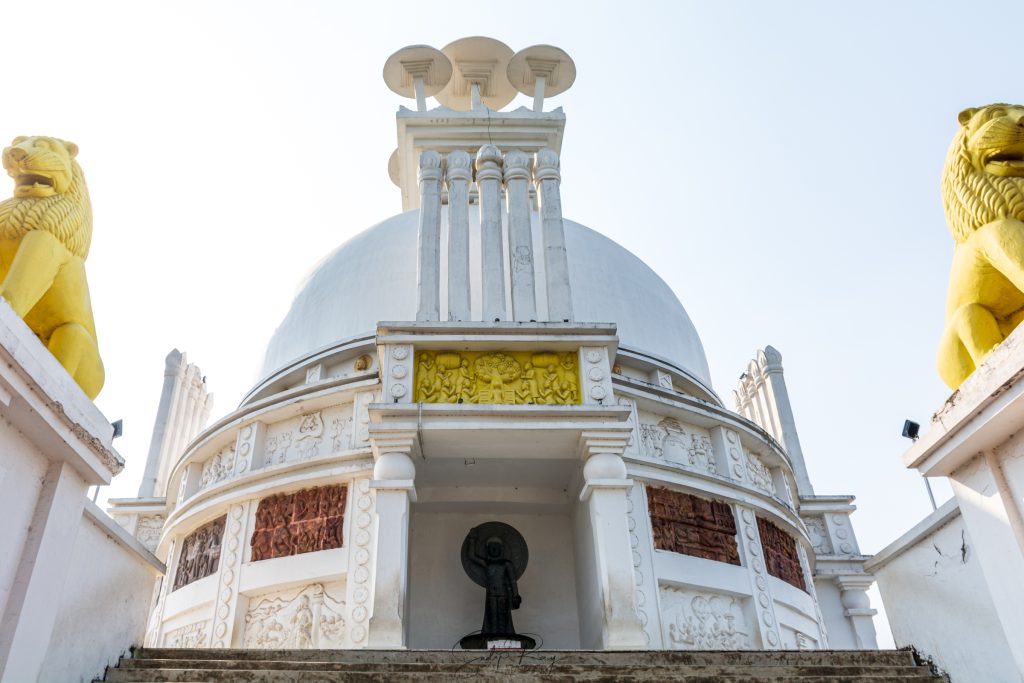
While returning from Dhauli, check out one of the celebrated Major Rock Edicts of Asoka, where 13 Asokan principles have been engraved in Brahmi script. In this inscription, Asoka famously declared that all men are his children.

C. Nandankanan Zoological Park:
Sprawled across a huge 437 hectares, this zoo and botanical garden is famous for its white tigers. It houses a wide range of flora and fauna such as the African Lion, Bengal Tiger, Giraffe, Himalayan Black Bear, Indian Elephant, Honey Badger, Nile Crocodile, Yellow Anaconda, Green Iguana, Sun Parakeet, Violet Turaco, Indus Valley Bullfrog, so on.

D. Pipili:
Located 45 minutes drive away from Bhubaneswar, Pipili is famous for its ‘Chandua’ applique work.
E. Raghurajpur:
Famous for its ‘pattachitra’, this picturesque village is situated 52 km from the Odia capital.
F. Puri:
One of the foremost pilgrimage destinations of the Hindus, Puri is the home of the auspicious Jagannatha Temple. Lord Jagannatha along with his siblings Balarama and Subhadra are venerated here. Puri is also popular for its sea beaches.
G. Konark:
Known as Arkakshetra in the olden days, Konark is home to the resplendent Sun Temple, an architectural wonder, and a UNESCO World Heritage Site. At present, the temple is in ruins. Even then, you will be left awestruck by its magnificence.

Konark is situated 66 km away from Bhubaneswar and takes about 2 hours to reach by road.
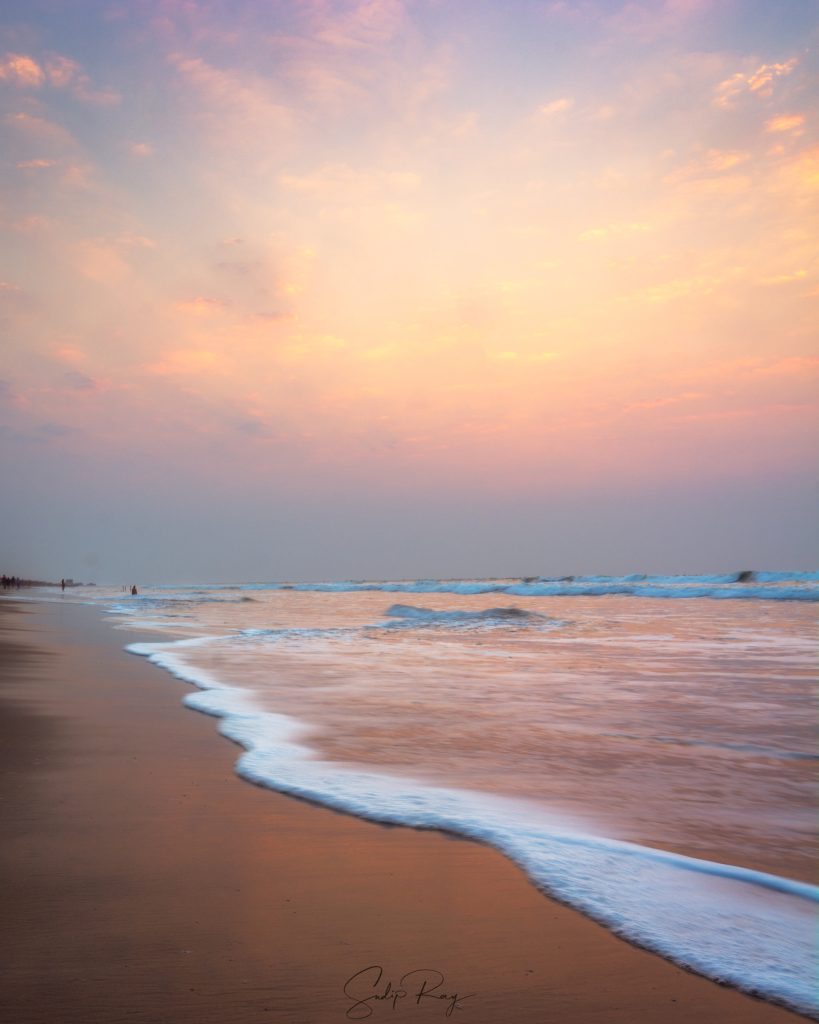
H. Bhitarkanika National Park:
This fascinating national park lies 167 km from Bhubaneswar. The dense mangrove forest, located in the deltaic region of the Brahmani – Baitareni river system, covers a total area of 672 sq. km. It was declared a Ramsar site by UNESCO back in 2002. The national park is widely known as the home of saltwater crocodiles. The tidal creeks are full of as many as 1600 crocodiles. It also has Indian python, King Cobra, Rhesus Monkey, Monitor Lizard, Chitals, Black Ibis, Egrets, Asian Open Bill etc. It is also famous for migratory birds during winter.

The Gahirmatha beach near Bhitarkanika is widely known as one of the world’s largest nesting and breeding ground of Olive Ridley turtles.
I. The Diamond Triangle of Ratnagiri, Udaygiri, and Lalitgiri:
The three Buddhist sites of Ratnagiri, Lalitgiri, and Udaygiri comprise the Diamond Triangle of Odisha. These places were important centers for preaching and practicing Vajrayana Buddhism. Vajrayana involves tantric and esoteric practices for achieving enlightenment. It originated in erstwhile Bengal, gradually spreading to other parts of India and East Asia. Vajrayana is also known as Diamond Vehicle or Thunderbolt Vehicle. The name Diamond Triangle has thus been derived from the term Diamond Vehicle.

All three sites have proved to be treasure troves of Buddhist remains. Archaeologists have unearthed remains of Mahaviharas, Stupas, Chaityas, and even holy relics of Buddha himself.
